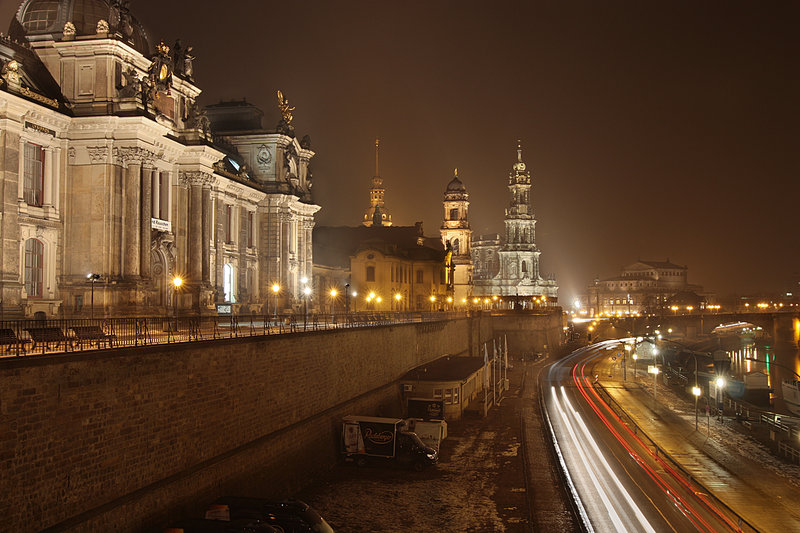Brühlsche Terrasse

Description: Brühl's Terrace is a historic architectural ensemble in Dresden, Germany. Nicknamed "The Balcony of Europe", the terrace stretches high above the shore of the river Elbe in a city which is quite large as measured by area relative to its half a million inhabitants. Located north of the recently rebuilt Neumarkt Square and the Frauenkirche, is one of the favourite inner-city places of both locals and tourists for walking, people watching, and having a coffee.
History: The present-day terrace was part of the city's fortifications, rebuilt upon the 1546/47 Schmalkaldic War at the behest of Elector Maurice of Saxony and his successors Augustus and Christian. The name Brühl's Terrace is a reference to Count Heinrich von Brühl, Minister of Elector Frederick Augustus II, who from 1737 had a city palace with a gallery, a library and adjacent gardens built on the location. In 1747 the whole terrace was given to him by the Saxon elector as a gift for the innovative introduction of a betterment tax.
After the Saxon defeat at the Battle of Leipzig and the occupation by Russian troops, military governor Prince Nikolai Grigorjevich Repnin-Wolkonski ordered the opening to the public in 1814. He charged the architect Gottlob Friedrich Thormeyer with the building of a flight of stairs at the western end to reach the terrace from Castle Square and Augustus Bridge. The Brühl Palace was demolished in the course of the building of the Saxon Ständehaus in 1900. Academy of Fine Arts and Frauenkirche.
The ensemble was totally destroyed in February 1945 when the city centre was heavily hit by the Allied Bombing of Dresden during the end phase of World War II. Today, it has been rebuilt; the precise amount restored is difficult to say as a percentage, but in general one can say the emsemble looks very much the same today as it did in the past.
Today, Bruehl's Terrace is again one of the main city landmarks besides the Frauenkirche (Church of our Lady), Dresden Castle, the Hofkirche and buildings on Theatre Square such as the Zwinger and the Semperoper, which are all located in the vicinity. At the Bärenzwinger students' club near the monument for Johann Friedrich Böttger, one can see a fingerprint in a guard rail of the terrace garden. This dactylogram is said to be proof of the strength of August the Strong, who is said to have left the mark - but is only one of many myths surrounding August, such as the legend that he fathered 365 children.
Terrace Architecture: Most people enter the terrace from the Schlossplatz (Castle Square) on the west end of the terrace. Beside Saxony's Supreme Court a staircase with four sculptures (The Four Times of Day) leads from the Schlossplatz (Castle Square) up to Brühl's Terrace. One of the next buildings to the right is the Academy of Fine Arts. There is an ensemble of important buildings, such as the Albertinum.